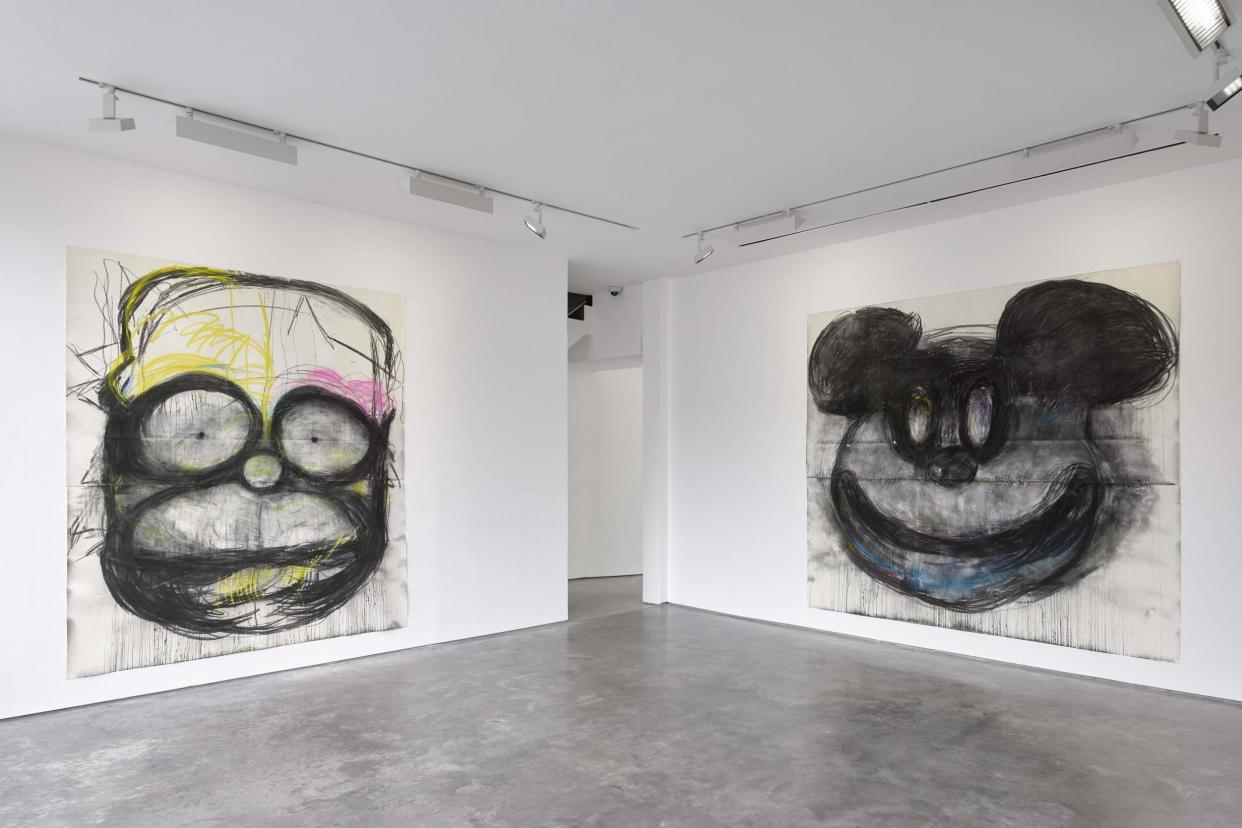Joyce Pensato, exhibition review: Collection of cartoon grotesques offers a darker take on America

The walls up the Lisson Gallery’s staircase and in its upper gallery are covered in wallpaper dominated by spattered paint. It features a snapshot of the stuff in Joyce Pensato’s studio, blown up and repeated.
Beneath the splashes and drips of paint, you can detect photographs, including mugshots of a young, unnamed girl. But two Hollywood images catch the eye: Robert De Niro, mohicaned and deranged as Travis Bickle in Taxi Driver, and Gena Rowlands as the gun-toting heroine in Gloria.
While I’m not sure the wallpaper works as an installation, it does as a manifesto. This is not incidental ephemera: Pensato, Brooklyn born and bred, identifies with these New York characters, adopting their personas as she works.
The subjects she depicts — attacks, more accurately — are cartoon characters and superheroes: Mickey and Donald; Homer; Batman. Pensato reduces these familiar characters to basic shapes, to the brink of abstraction. In paintings, they’re surrounded and sometimes almost obliterated by forests of drips. In sometimes vast charcoal and chalk drawings, they’re sketched in, erased and redrawn with an intensity that tears and frays the paper.
There’s something almost sculptural in the physicality of these works, as if Pensato is honing these shapes from a clump of raw material. And when the process works best, the characters emerge with a new mood, whether it’s an absurd menace, as with numerous images of the Disney characters, or a hypnotised mania, in the case of Homer Simpson. You end up with work that has the immediacy of street art, but with the hard-won patina of abstract expressionism.
Pensato is deadpan on what these American grotesques mean. She’s done them for years, so they’re no overt comment on Trump’s America. Rather, they’re part of that tradition of subverting the most apparently innocent cultural icons to expose a nation’s often sinister underbelly.
Until June 24, Lisson Gallery; lissongallery.com

 Yahoo News
Yahoo News 
